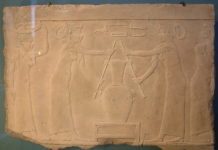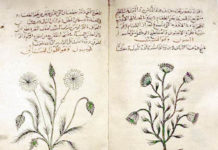But the origins of its first use and discovery remain unclear, though it is pretty much agreed upon that sucrose solutions have been around for a long time. Dictionaries generally agree that the word means a thick sticky liquid consisting of a concentrated solution of sugar and water, and its etymology dates back to forms in the Middle English (“sirup”), French (“sirop”), Middle Latin (“syrupus”), and Arabic (“sharab”). Moreover, molasses, a by-product of the sugar refining process, is derived from the Latin word, “mel,” and was first seen in print in 1582, according to the OED.
Maple Syrup In Vermont
In Vermont, as with much of the Northeast, the leading syrup of use and consumption is maple syrup, and it is generally believed that the Native Americans were the first to discover it. While there are no authenticated accounts of the first discovery of maple syrup one popular myth is that a Native American chief hurled his tomahawk at a maple tree, and, as the sap began to flow out and collect at its base, his wife, believing the liquid was water, brought it home and used it to cook venison. The meat and juices were deliciously sweet, and, after deducing that the sweetness came from the tree liquid, they returned to collect more.
Roughly translated from the Algonquin, “sinsibuckwud” means “sweet bud,” and maple syrup, about twice as sweet as table sugar, is certainly that. At one time it was even the nation’s leading sweetener, in dry and in liquid form, but it did not ship well and could only be made once a year so it was soon displaced by the mammoth sugar industry beginning to gain momentum in Americas.
Long thought a novelty item, according to the USDA 2009 Maple Syrup Report overall production went up 22 percent from just a year before. And Vermont alone produced 920,000 gallons of the stuff, a 30 percent increase from 2008 and the most on record since 1944. Vermont continues to produce the most syrup of any other state, although New England (excluding RI) as a whole did quite well in 2009, producing 1,468,000 gallons.
Interestingly, although much of the nation (apart from the Northeast) seems content with such mass-produced corn syrup or brown sugar substitutes as Aunt Jemima or Mrs. Butterworth’s, the Canadians, also purveyors of the maple industry, have this descriptive yet playful name for the synthetics: “pole syrups,” because they taste as if they have been tapped from telephone poles.
Origins of HFCSs and Corn and Karo Syrups
But America’s sweet spots only begin in the North. Indeed, it would seem things only get sweeter as we move south, as in the 1900s the Corn Products Refining Company of New York and Chicago introduced a sticky sweet syrup made from corn starch used as feedstock. And, just like that the engineered and controversial Karo syrup was born. The product raised eyebrows from the moment is was introduced as a “natural” and more stable product than table (cane) sugar.
Easy to produce and a thicker, more viscous, more stable sweetener (especially in baking), Karo would soon lead the way for the insanely sweet High Fructose Corn Syrup (HFCS) to be developed. HFCS is corn syrup which has been chemically altered to have around 55% fructose and 45% glucose, which mean it has little to no nutritional value as nowhere in nature (fruit) is the fructose so high per serving and glucose is essentially “predigested” sugar (the result of sucrose chemically broken down inside the body).
But despite some clamor raised from the medical community and no doubt the sugar industry of the time, HFCSs soon found their way into everything from soft drinks to ice cream. Ironically, one of the most celebrated upshots was that Karo made famous a sinfully delicious mixture of sugar, eggs, vanilla, HFCSs, and pecans in a pie shell (seen first in 1929) referred to everywhere with salivating mouths and smacking lips as pecan (or “pick-on,” depending on how you pronounce it) pie.
Karo also helped foster such products as Mr. and Mrs. Victor Patterson’s Golden Eagle Syrup. This product (apparently) is still wildly popular in the South for its Karo-like properties combined with the milder and more natural tasting infusion of honey.
History of the Sugar Beet
Another little know syrup come the much-used but little-recognized sugar beet. While HFCS may be the sweetest manufactued stuff on earth, the sugar beet is still responsible for between 20 to 30 percent of the world’s sugar production. It boasts an unheard-of-in-nature 17 percent sugar by weight, which almost doubles the cane’s 10.
Beet syrup (later crystallized to make sugar) is also used for many of the same applications as cane syrup, including molasses production, with the general if not curious exception of rum distillation (then again, it is hard to imagine beet-flavored rum).
Syrup is a world-wide phenomenon, and used in many ways. The Brits even have a syrup made from yeast sediment after beer making, called Marmite. Yes, our fascination with sucrose-solutions is vernerable and multitudinous. They seductively slurp down our throats, coating our mouths with a viscous, sugary blanket of slinky sweet goodness that we crave on our pancakes and in our drinks.








